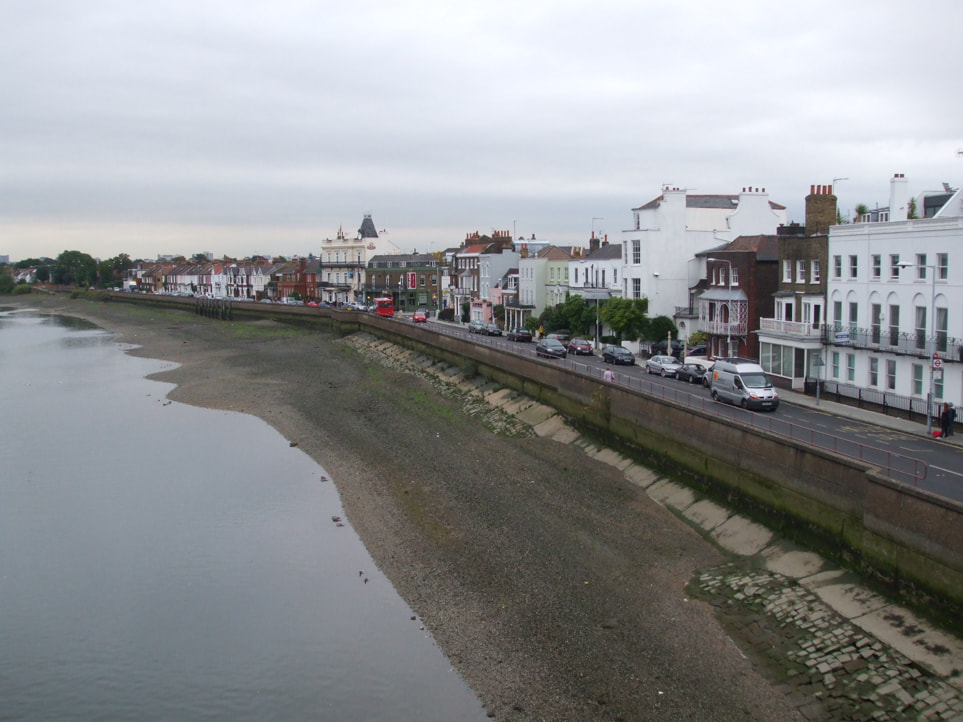Richmond Barnes Planning Permission: A Comprehensive Guide to Securing Approval for Your Development Project
Richmond upon Thames, particularly the Barnes area, is a highly sought-after location known for its picturesque landscapes, vibrant community, and historic charm. Whether you’re considering a new build, an extension, or a renovation project in Barnes, understanding the planning permission process is crucial. This comprehensive guide will walk you through everything you need to know about obtaining planning permission in Richmond Barnes, ensuring your project aligns with local regulations and meets your expectations.
Understanding Planning Permission in Richmond Barnes
Planning permission is a formal approval from the local authority, Richmond upon Thames Borough Council, required for most construction, demolition, or significant alteration projects. This permission ensures that the proposed development aligns with local and national planning policies, including considerations for environmental impact, design, and community benefit.
When Do You Need Planning Permission?
Not all projects require planning permission. However, it is mandatory for:
- New Builds: Any new residential or commercial building.
- Large Extensions: Adding significant extensions to your property, especially those that change the overall footprint or height.
- Change of Use: Converting a property from one use class to another, such as turning a residential home into a commercial space.
- Listed Buildings: Any alterations, extensions, or demolitions to a listed building, as these structures have special protections due to their historic or architectural significance.
- Major Landscaping Changes: Significant changes to the external environment, such as building fences, walls, or large garden structures.
It’s always wise to consult with the Richmond planning department or a planning consultant to determine whether your project requires permission.
Types of Planning Applications
In Richmond Barnes, there are several types of planning applications you might need to consider, depending on the nature of your project:
- Full Planning Permission: Required for most significant developments, including new builds, large extensions, and commercial projects.
- Outline Planning Permission: Used to establish whether a project is likely to be approved before detailed plans are developed.
- Householder Planning Permission: Specifically for homeowners looking to make minor extensions or alterations to their property.
- Listed Building Consent: Necessary for any work on a listed building, ensuring the historic character is preserved.
- Change of Use: For changing the designated use of a property, such as converting residential space to commercial use.
Steps to Obtain Planning Permission in Richmond Barnes
Securing planning permission in Richmond Barnes involves several steps. Each step is crucial to ensure that your application is successful.
1. Pre-Application Advice
Before submitting your planning application, it’s advisable to seek pre-application advice from Richmond upon Thames Borough Council. This service provides you with initial feedback on your proposal, helping you understand potential issues and how to address them. It can also give you an indication of the likelihood of your application being approved.
2. Prepare Your Application
A well-prepared planning application is key to gaining approval. Your application should include:
- Site Plans and Drawings: Detailed architectural plans that show the proposed changes.
- Design and Access Statement: A document explaining the design approach and how it considers the local area and accessibility.
- Supporting Documents: Depending on your project, you may need additional documents such as environmental impact assessments, heritage statements, or flood risk assessments.
- Application Form and Fees: Complete the planning application form and pay the required fee. Fees vary depending on the nature and scale of the project.
3. Submit Your Application
Submit your application online through the Planning Portal or directly to Richmond upon Thames Borough Council. Ensure that all required documents are included to avoid delays.
4. Public Consultation
Once your application is submitted, it will be open for public consultation. Neighbors and local community members can review and comment on your proposal. The council will also notify relevant statutory consultees, such as environmental agencies or heritage bodies.
5. Council Decision
The council will assess your application based on local and national planning policies, public comments, and the advice of consultees. They may grant full approval, conditional approval, or refuse your application. In some cases, they may request amendments before making a decision.
6. Post-Decision
If your application is approved, you’ll receive a decision notice outlining any conditions you must meet. If refused, you have the option to appeal the decision or submit a revised application addressing the council’s concerns.
Key Considerations for Richmond Barnes Planning Permission
When applying for planning permission in Richmond Barnes, there are specific considerations to keep in mind:
1. Heritage and Conservation Areas
Richmond Barnes is home to several conservation areas and listed buildings. Projects in these areas must preserve or enhance the historic character. Any proposed changes will be scrutinized to ensure they are sympathetic to the surroundings.
2. Environmental Impact
Richmond is known for its green spaces and commitment to environmental sustainability. Projects that affect local wildlife, trees, or waterways may require an environmental impact assessment. Incorporating eco-friendly designs and materials can positively influence the council’s decision.
3. Design Quality
High-quality design is a priority for Richmond Borough Council. Your project should complement the character of the area, with careful consideration given to scale, materials, and overall aesthetic. The council encourages modern designs that respect traditional styles.
4. Neighbor Consultation
Engaging with your neighbors before submitting your application can help identify potential objections and allow you to address concerns early. Positive neighbor relations can also support your application during the public consultation phase.
Tips for a Successful Planning Application
Securing planning permission in Richmond Barnes can be a complex process, but the following tips can increase your chances of success:
- Engage a Professional: Hiring an architect or planning consultant familiar with Richmond Barnes can ensure your application is well-prepared and meets all requirements.
- Understand Local Policies: Familiarize yourself with Richmond’s Local Plan and the London Plan, as your application must align with these policies.
- Prepare for Delays: The planning process can take several months, especially if additional documents or amendments are requested. Factor in these timelines when planning your project.
- Appeal if Necessary: If your application is refused, don’t be discouraged. You have the right to appeal or submit a revised application that addresses the council’s concerns.
Conclusion
Obtaining planning permission in Richmond Barnes is a crucial step in any development project, ensuring that your plans align with local regulations and community expectations. By understanding the process, preparing a thorough application, and considering the unique aspects of the Barnes area, you can navigate the planning system successfully and bring your vision to life. Whether you’re renovating a historic property or building a modern home, this guide provides the foundation you need to secure the necessary approvals and move forward with confidence.



No responses yet